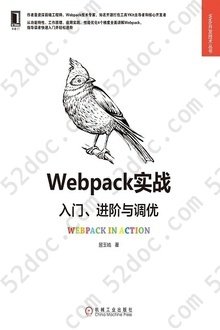注重体验与质量的电子书资源下载网站
分类于: 计算机基础 人工智能
简介

Data Science at the Command Line: Facing the Future with Time-Tested Tools 豆 7.3分
资源最后更新于 2020-10-05 18:43:59
作者:Jeroen Janssens
出版社:O'Reilly Media
出版日期:2014-01
ISBN:9781491947852
文件格式: pdf
标签: 数据分析 data 计算机 数据挖掘 编程 cs Python 计算机科学
简介· · · · · ·
This hands-on guide demonstrates how the flexibility of the command line can help you become a more efficient and productive data scientist. You’ll learn how to combine small, yet powerful, command-line tools to quickly obtain, scrub, explore, and model your data.
To get you started—whether you’re on Windows, OS X, or Linux—author Jeroen Janssens introduces the Data Science Too...
目录
Chapter 1 Introduction
Overview
Data Science Is OSEMN
Intermezzo Chapters
What Is the Command Line?
Why Data Science at the Command Line?
A Real-World Use Case
Further Reading
Chapter 2 Getting Started
Overview
Setting Up Your Data Science Toolbox
Essential Concepts and Tools
Further Reading
Chapter 3 Obtaining Data
Overview
Copying Local Files to the Data Science Toolbox
Decompressing Files
Converting Microsoft Excel Spreadsheets
Querying Relational Databases
Downloading from the Internet
Calling Web APIs
Further Reading
Chapter 4 Creating Reusable Command-Line Tools
Overview
Converting One-Liners into Shell Scripts
Creating Command-Line Tools with Python and R
Further Reading
Chapter 5 Scrubbing Data
Overview
Common Scrub Operations for Plain Text
Working with CSV
Working with HTML/XML and JSON
Common Scrub Operations for CSV
Further Reading
Chapter 6 Managing Your Data Workflow
Overview
Introducing Drake
Installing Drake
Obtain Top Ebooks from Project Gutenberg
Every Workflow Starts with a Single Step
Well, That Depends
Rebuilding Specific Targets
Discussion
Further Reading
Chapter 7 Exploring Data
Overview
Inspecting Data and Its Properties
Computing Descriptive Statistics
Creating Visualizations
Further Reading
Chapter 8 Parallel Pipelines
Overview
Serial Processing
Parallel Processing
Distributed Processing
Discussion
Further Reading
Chapter 9 Modeling Data
Overview
More Wine, Please!
Dimensionality Reduction with Tapkee
Clustering with Weka
Regression with SciKit-Learn Laboratory
Classification with BigML
Further Reading
Chapter 10 Conclusion
Let’s Recap
Three Pieces of Advice
Where to Go from Here?
Getting in Touch
Overview
Data Science Is OSEMN
Intermezzo Chapters
What Is the Command Line?
Why Data Science at the Command Line?
A Real-World Use Case
Further Reading
Chapter 2 Getting Started
Overview
Setting Up Your Data Science Toolbox
Essential Concepts and Tools
Further Reading
Chapter 3 Obtaining Data
Overview
Copying Local Files to the Data Science Toolbox
Decompressing Files
Converting Microsoft Excel Spreadsheets
Querying Relational Databases
Downloading from the Internet
Calling Web APIs
Further Reading
Chapter 4 Creating Reusable Command-Line Tools
Overview
Converting One-Liners into Shell Scripts
Creating Command-Line Tools with Python and R
Further Reading
Chapter 5 Scrubbing Data
Overview
Common Scrub Operations for Plain Text
Working with CSV
Working with HTML/XML and JSON
Common Scrub Operations for CSV
Further Reading
Chapter 6 Managing Your Data Workflow
Overview
Introducing Drake
Installing Drake
Obtain Top Ebooks from Project Gutenberg
Every Workflow Starts with a Single Step
Well, That Depends
Rebuilding Specific Targets
Discussion
Further Reading
Chapter 7 Exploring Data
Overview
Inspecting Data and Its Properties
Computing Descriptive Statistics
Creating Visualizations
Further Reading
Chapter 8 Parallel Pipelines
Overview
Serial Processing
Parallel Processing
Distributed Processing
Discussion
Further Reading
Chapter 9 Modeling Data
Overview
More Wine, Please!
Dimensionality Reduction with Tapkee
Clustering with Weka
Regression with SciKit-Learn Laboratory
Classification with BigML
Further Reading
Chapter 10 Conclusion
Let’s Recap
Three Pieces of Advice
Where to Go from Here?
Getting in Touch








